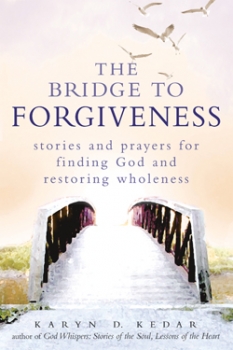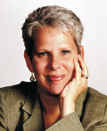

|

IS THIS BOOK FOR YOUR GROUP?
Are you and your group looking to explore forgiveness in a new, eye- and heart-opening way? Are you ready to discover the process that allows for forgiveness, a process which, in turn, deepens your connection to those around you and with the Divine? With beautiful, insightful language and meaningful, deeply personal stories, Karyn D. Kedar offers guidance through the loss, anger, acceptance, learning, forgiveness and restoration that is the path toward discovering forgiveness.
|
6 x 9, 176 pp, Quality Paperback, 978-1-58023-451-1
|
|
|
|
|
Embrace forgiveness as a spiritual principle and
discover a new closeness with the Divine. Forgiveness is a spiritual path that you embark on with intention and vision, purposefully seeking to bridge the gap between your hurt and suffering and your sense of wholeness and resilient inner light—the light of God. This inspiring guide for healing and wholeness supplies you with a map to help you along your forgiveness journey. Deeply personal stories, comforting prayers and intimate meditations gently lead you through the steps that allow for the evolution of forgiving—loss, anger, acceptance, learning, forgiveness and restoration. Tapping both ancient and contemporary sources for the nourishment and strength needed as you seek to rekindle inner peace, this book tenderly whispers encouragement as you are brought to—and realize you are able to cross—your own bridge to forgiveness.
“Very personal.... Asks readers ... to open their own souls to healing.... A useful introduction to the general topic of forgiveness, by a sensitive and knowledgeable teacher.... Recommended.” —Association of Jewish Libraries Newsletter “Lovely ... a perfect companion on the path to forgiveness, from those very difficult first steps to the ever-lighter steps that ultimately lead to peace, joy and wholeness.” —Marcia Ford, author, The Sacred Art of Forgiveness: Forgiving Ourselves and Others through God’s Grace “Heartfelt, soulful ... her insights are gentle and piercing. [This] is not simply a book to read, it is a journey to take.” —Rabbi Rami Shapiro, author, The Sacred Art of Lovingkindness: Preparing to Practice “This book’s word pictures move the reader into the author’s experience and the hope offered with its gentle tone and positive perspective.” —Congregational Libraries Today “Insightful, honest, frank ... will comfort anyone, from any spiritual background, who is struggling with the issue of forgiveness and will guide them toward healing. This is a beautiful book!” —Marci Shimoff, #1 New York Times coauthor, Chicken Soup for the Woman’s Soul “Like having a conversation with a caring and spiritually grounded friend who weaves stories, observations and prayers together for your benefit.” —Faith@Work “A beautiful book that will make a lasting impression on your life. Highly recommended.” —Robert L. Veninga, author, A Gift of Hope: How We Survive Our Tragedies “Elevates forgiveness into a spiritual practice.... A lovely and inspiring gift.” —Jewish Book World “Rabbi Kedar is that longed-for neighbor or girlfriend or aunt who—through gentle poetry and the honesty of stories—tells us what we need to hear in a way we are able to truly listen.” —Rabbi Nina Beth Cardin, author, Tears of Sorrow, Seeds of Hope: A Jewish Spiritual Companion for Infertility and Pregnancy Loss “A profound understanding of the practice of forgiveness as a healing discipline. If you carry anger in your heart, you must read this book. Whether you seek forgiveness, preach it, teach it or are gathering the courage to offer it, you cannot afford to be without it.” —David Gottlieb, coauthor, Letters to a Buddhist Jew
Download a printable version - Kedar speaks the need for a paradigm shift while thinking of forgiveness. She writes:
Forgiveness is a spiritual state, a way of being in the world which is sustainable with work and practice. Forgiveness can be about the other, but not necessarily. It can be about reconciling with whoever has offended you. But not necessarily. It is always about finding what you have lost, restoring a sense of wholeness, redeeming your inner light. It is always about an internal process of loss and acceptance, pain and understanding, anger and blessings, love and faith regained. How does Kedar redefine the process of forgiveness?
- Explain why it is important to understand what has been lost while on the road toward discovering forgiveness. What does seeing this loss lend to the forgiveness journey?
- Can you think of examples of constructive and destructive anger?
- In the chapter called “The Stepping-Stones” Kedar writes:
We do not forget. Rather, we take what we have experienced and learn to live a different way. We do not turn the other cheek; we take the pain of an assault and understand that to live a loving life we must release the anger. We do not condone; we accept our lives and search for ways to restore the light within us that has been diminished. If forgiveness is not about condoning bad behavior, explore what Kedar means by acceptance. How do you interpret this and in what ways can you apply the concept of acceptance to your own life?
- Kedar does not equate forgiving with forgetting. How does retelling the stories of your life in terms of blessing, rather than curse, help with the path of forgiveness?
- This book is very personal; discuss which passages most resonate with you and why.
 Can you tell us about your writing process? Can you tell us about your writing process?
I begin by thinking. I may even think for years about a topic. I check my thoughts against what I read, what I teach. I notice experiences in my life and the lives of others and run them through the filter of ideas and images that swirl around inside of me. Then my thoughts begin to tug at me in a new way, kind of like a voice that will not be silenced, and I begin to write. I open a few files and use a few notebooks. One notebook will be for quotes. One file will be called “random ideas.” One file will be called “rough draft.” I write in a writing group, not the kind that critiques, but the kind that shows up and sits with you, writing as you write, and drinking coffee as you do—as you work, they work. I write alone, sitting in my blue chair, staring out the window, reading poetry, listening to my muse. And lastly I never write in a linear fashion. I write from the middle out. That’s why you can read the book in every direction and it will make sense.
This is not a “how-to” book. Why do you use stories and metaphors to convey the message of the book?
I believe the powers of metaphor and story are transforming. They teach us about the core purpose and meaning in life. What I really want to know and what I really want to teach goes beyond rational sequences to the poetry which lives in the soul of the universe. Only poetry, prayer, and story can teach me what I yearn to know of love and life and holiness. How is this book a natural extension of your first book God Whispers: Stories of the Soul Lessons of the Heart?
God Whispers teaches that we have access to the spiritual universe if we pay attention to the sacred in everyday moments. It is as if ordinary moments whisper to us Divine Truths about the meaning and purpose of our lives. Forgiveness is one of those things that whispers to the spiritual yearnings of our soul. How can I get my loved one to understand the need for forgiveness?
Every person must travel the journey to love and understanding alone. You can only really do two things. First, live the message and walk the path yourself. Second, hold the vision of your loved one in wholeness, light, and healing in your heart. Your optimism for his or her healing will be reflected in you. Which is your favorite passage in the book?
“I Lift My Eyes (Esa Enai)” was the first thing that I wrote after the tragic and sudden death of my younger brother. He died of an apparent heart attack. When the prayer first appeared it was dedicated to him; now the entire book is dedicated to him. It taught me that sometimes life is like a rugged path covered in the shadows of tragedy, and that this path is absolutely paradoxical. It is at once private and solitary and universally shared. My pain was personal and I found comfort when I realized that it was a pain that was familiar to others. I also particularly like “From a Mother to Her Girls.” It was inspired by a woman who was going to bury her husband, her soul mate, the next day. With tears in her eyes she asked me what she should wear to the funeral. I went home and thought about it and realized that her question was really a statement—as if to say, “I can’t believe that I have to wake up and get dressed and bury my lover, my soul mate.” This meditation seemed to be an answer to that statement. After all, at the end of the day love is all that matters and love is on the other side of forgiveness. Your writing is very personal. What do you hope to accomplish by sharing so much?
There is a fine line between the personal and the universal. Many of us can probably remember the grade school teacher who seemed to be talking about herself all the time. We remember being bored by her stories about her life and children. Her ramblings seemed to have nothing to do with the subject she was charged to teach. They had nothing to do with us. And then there is the teacher whose shared story inspired and motivated us to act in a different way, to become something more, to dream, to believe. The former is self-absorption. The latter is the ability to tap into an archetype, a universal reality, an eternal truth. The story about a child becomes the story about all children. The story about the personal struggle becomes the story of everyone’s struggle and triumph. I hope that the personal sharing in this book reaches deep into the universe of shared experience. I hope that I share in such a way that the language seems to be about you, your life, as if I have known all along what you are thinking, feeling. That in my personal expression I have expressed what you have been trying to say for quite a while. I may begin with me; I hope I end with you.
|
|
|

